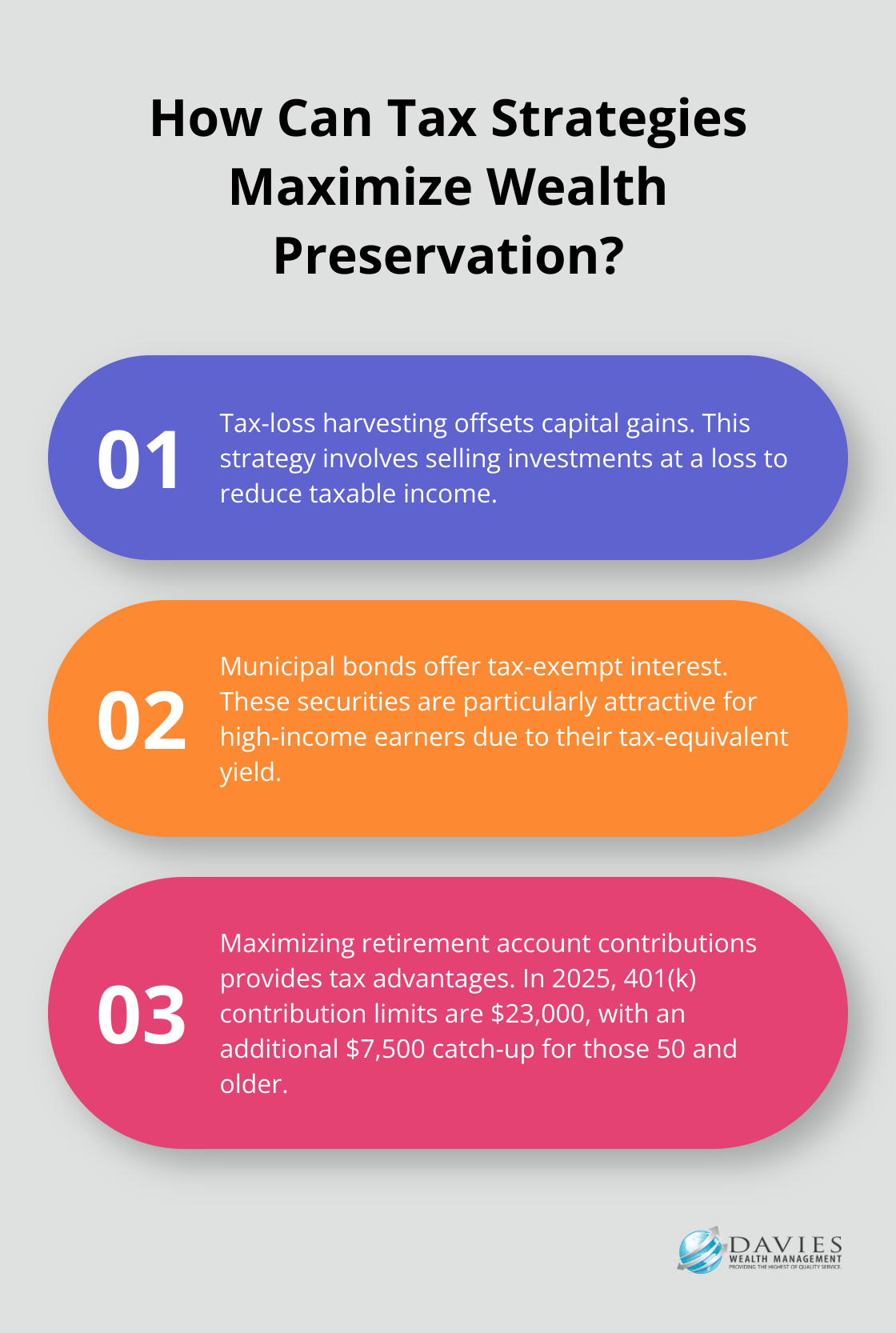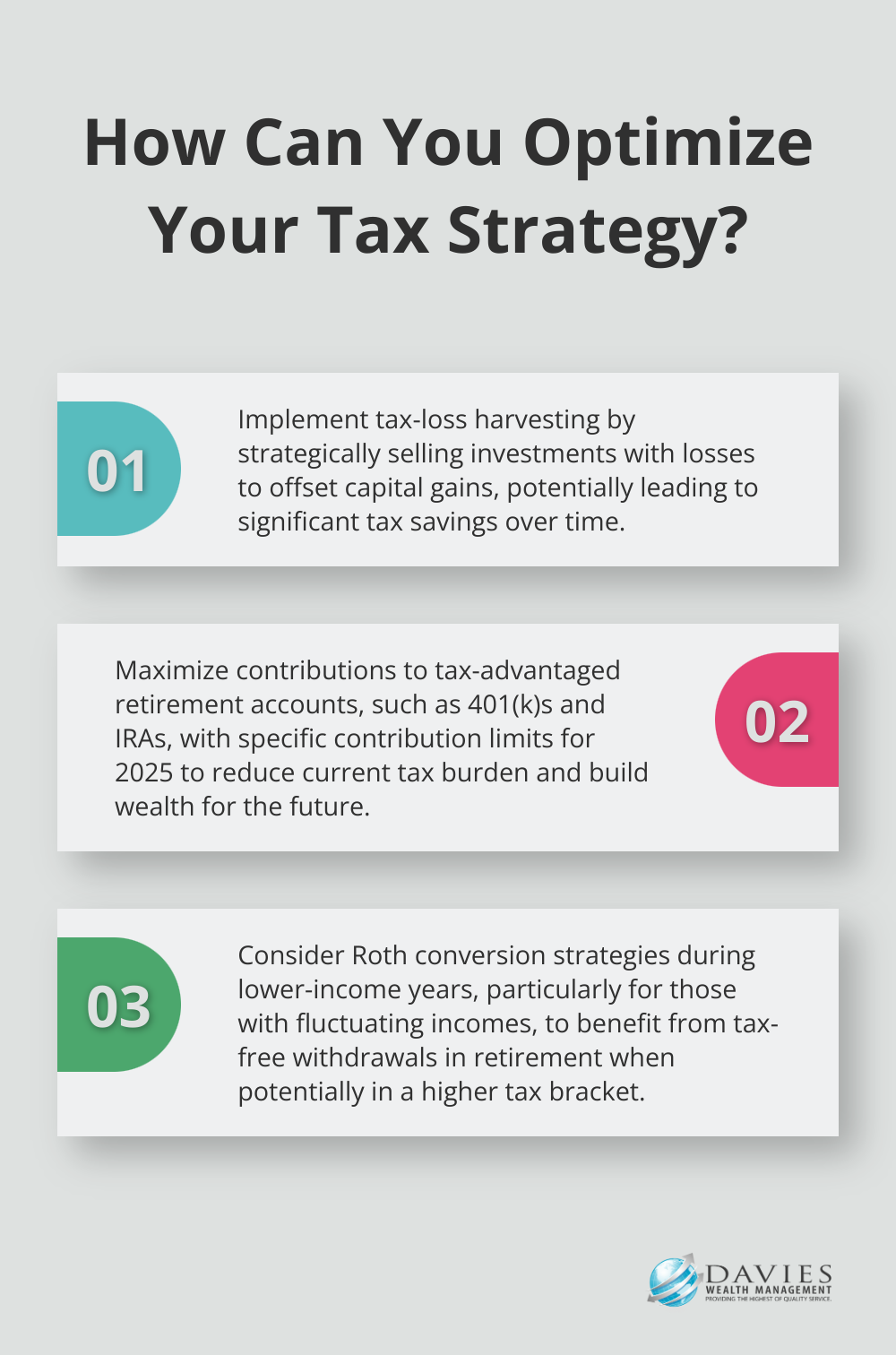Strategic wealth preservation is a critical aspect of long-term financial success. At Davies Wealth Management, we understand that protecting and growing your assets requires a thoughtful, multifaceted approach.
In this post, we’ll explore effective strategies to safeguard your wealth while positioning it for sustainable growth. From asset allocation to tax-efficient planning, we’ll provide practical insights to help you build a robust wealth preservation plan tailored to your unique financial goals.
What Is Strategic Wealth Preservation?
The Essence of Wealth Preservation
Strategic wealth preservation represents a proactive approach to protect and grow assets over the long term. This strategy forms a cornerstone of financial planning, particularly for high-net-worth individuals and professional athletes who face unique financial challenges. Strategies such as prudent investment allocation, comprehensive insurance coverage, and robust estate planning come to the forefront.
Key Elements of Wealth Preservation
Effective wealth preservation strategies incorporate several vital components. Risk management stands at the forefront, involving the identification of potential threats to wealth and the implementation of mitigation measures. For example, investment portfolio diversification across various asset classes (stocks, bonds, real estate) helps spread risk.
Tax efficiency also plays a pivotal role. The impact of taxes on wealth accumulation can be substantial. Vanguard research found that the most important thing an investor can do to maximize the potential for tax loss harvesting success is to reinvest tax savings.
Common Misconceptions
Many people incorrectly assume that wealth preservation only maintains the status quo. In reality, it balances protection with growth. A Credit Suisse study found that 70% of wealthy families lose their fortune by the second generation, often due to inadequate preservation strategies.

Another widespread myth suggests that wealth preservation only benefits the ultra-wealthy. In fact, individuals across various wealth levels can gain from these strategies. Professional athletes, who often have short career spans and fluctuating incomes, find strategic wealth preservation particularly important.
Crafting a Comprehensive Strategy
A robust wealth preservation plan should adapt to changes. It must account for shifts in personal circumstances, market conditions, and tax laws. Regular reviews and adjustments prove essential. A Spectrem Group survey revealed that 58% of investors with a net worth of $5 million or more review their financial plans at least quarterly.
Financial experts emphasize the importance of a holistic approach. This includes not only investment management but also estate planning, insurance strategies, and retirement planning. For athlete clients, career transition planning ensures financial stability beyond their playing years.
As we move forward, we’ll explore how effective asset allocation forms a critical component of wealth preservation. Understanding the balance between different asset classes can significantly impact your long-term financial success.
How to Allocate Assets for Effective Wealth Preservation
The Power of Diversification
Diversification across asset classes helps lower your overall investment risk by tapping into a concept known as correlation. We recommend spreading investments across stocks, bonds, real estate, and alternative assets (such as commodities or private equity).

For professional athletes, a mix that includes both liquid assets for immediate needs and long-term investments secures their financial future beyond their playing careers. This often involves allocating a portion of their portfolio to high-quality municipal bonds for tax-efficient income, alongside growth-oriented stocks and real estate investments.
Risk Management Through Smart Allocation
Proper asset allocation plays a key role in managing risk effectively. The 2008 financial crisis demonstrated the importance of this strategy, with diversified portfolios experiencing significantly less volatility than concentrated ones. Sophisticated risk assessment tools determine each client’s risk tolerance and adjust their portfolio accordingly.
For example, a 60/40 split between stocks and bonds might suit a client nearing retirement, while a younger investor might benefit from a higher allocation to stocks to capitalize on long-term growth potential. These ratios are not set in stone and require regular review and adjustment based on market conditions and personal circumstances.
Balancing Growth and Preservation
Finding the right balance between growth and preservation is essential. This principle applies through careful selection of a mix of assets that align with clients’ long-term goals.
High-net-worth clients often benefit from incorporating alternative investments like hedge funds or private equity to enhance returns while managing volatility. These assets typically have a low correlation with traditional stocks and bonds, providing additional diversification benefits.
Tailored Strategies for Unique Situations
Asset allocation strategies must adapt to each client’s unique situation. For professional athletes, this might mean creating a portfolio that can withstand the volatility of their career earnings while setting aside funds for post-career ventures. Business owners might need to balance their company stock with other investments to reduce concentration risk.
The Importance of Regular Rebalancing
Regular rebalancing helps you maintain your original asset-allocation strategy and allows you to implement any changes you make to your investing strategy. We typically recommend reviewing and adjusting asset allocation at least annually or when significant life events occur. This ensures that the portfolio remains aligned with the client’s goals and risk tolerance, even as market conditions change.
As we move forward, we’ll explore how tax-efficient strategies complement effective asset allocation to further enhance wealth preservation efforts. Understanding the impact of taxes on your investments can significantly influence your long-term financial success.
Tax Strategies to Maximize Wealth Preservation
Leveraging Tax-Loss Harvesting
Tax-loss harvesting stands as a powerful technique in wealth preservation. This strategy involves the strategic sale of investments that have experienced losses to offset capital gains in other parts of your portfolio. Tax-loss harvesting is a widely used strategy in the field of personal wealth management, often lauded for its potential to improve an investor’s after-tax returns. For high-net-worth individuals, this can translate to significant savings over time.
Utilizing Municipal Bonds
For clients in higher tax brackets, municipal bonds often prove advantageous. These debt securities, issued by state and local governments, offer interest that’s typically exempt from federal income tax (and in some cases, state and local taxes as well). Tax-equivalent yield is the return calculation that puts a taxable bond and tax-exempt muni on equal footing, which can be particularly attractive for high-income earners.
Maximizing Retirement Accounts
We strongly advocate for the maximization of contributions to tax-advantaged investment strategies. For 2025, the contribution limit for 401(k) plans is $23,000, with an additional $7,500 catch-up contribution for those 50 and older. IRAs allow for $7,000 in contributions, with a $1,000 catch-up. These accounts offer tax-deferred growth, potentially lowering your current tax burden while building wealth for the future.
Implementing Roth Conversion Strategies
For many clients, including professional athletes with fluctuating incomes, Roth conversion strategies can prove beneficial. This involves the conversion of traditional IRA assets to a Roth IRA during lower-income years, paying taxes on the conversion at a potentially lower rate. The benefit? Tax-free withdrawals in retirement, when you might be in a higher tax bracket.
Exploring Charitable Giving Strategies
Charitable giving can serve as a powerful tool for tax management. Options like donor-advised funds allow for an immediate tax deduction while providing flexibility in timing the actual charitable gifts. For clients with substantial assets, charitable remainder trusts are a “split interest” giving vehicle that allows you to make contributions to the trust and be eligible for a partial tax deduction, while also supporting favored causes.

Tax laws remain complex and ever-changing. We stay informed of the latest developments to ensure wealth preservation strategies remain optimized. While tax efficiency plays a key role, it represents just one piece of a comprehensive wealth management plan. We always consider the broader financial picture when implementing these strategies.
Final Thoughts
Strategic wealth preservation requires careful planning and execution. We explored key strategies to safeguard and grow assets over the long term, including effective asset allocation and tax-efficient planning. These methods form the foundation of a robust wealth preservation plan that can significantly impact long-term financial success.

Your financial situation, goals, and risk tolerance are unique. A personalized approach to strategic wealth preservation is essential. We recommend assessing your current financial situation and defining your long-term goals as a starting point.
At Davies Wealth Management, we craft tailored wealth preservation strategies that align with your specific needs and objectives. Our team understands the complexities of managing wealth (especially for professional athletes who face unique financial challenges). We invite you to contact us for expert guidance in navigating the intricacies of wealth management.



Leave a Reply